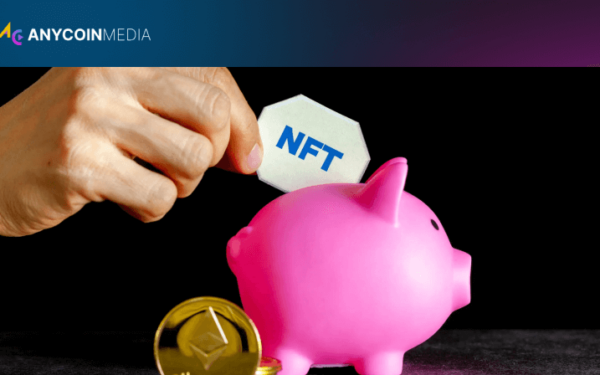Cryptocurrency markets are renowned for their volatility, with prices often fluctuating dramatically within short periods. This inherent instability, while attractive to some traders, poses significant challenges for those seeking more predictable stores of value or mediums of exchange. Enter the concept of pegging — a mechanism designed to maintain a cryptocurrency’s value relative to another asset, typically a fiat currency or commodity.
At its core, pegging in the cryptocurrency world refers to the practice of maintaining a fixed exchange rate between a digital asset and another currency or asset. This approach aims to combine the benefits of blockchain technology with the stability of traditional financial instruments.
Pegged cryptocurrencies, often called stablecoins, come in several varieties:
Each type employs different methods to achieve and maintain its peg, with varying degrees of success and stability.
Fiat-collateralized stablecoins are among the most straightforward implementations of pegging in crypto. These digital assets are backed by reserves of traditional currencies, typically held in bank accounts.
The process involves several key steps:
Tether (USDT) and USD Coin (USDC) are prominent examples of fiat-collateralized stablecoins. These tokens aim to maintain a 1:1 peg with the US dollar, facilitating easier crypto-to-fiat transactions and providing a stable store of value within the volatile crypto ecosystem.
While fiat-collateralized stablecoins offer relative stability, they are not without controversy. Questions about the transparency of reserves and the centralized nature of their issuance have led to ongoing debates within the crypto community.
Crypto-collateralized stablecoins take a different approach, using other cryptocurrencies as collateral. This method aligns more closely with the decentralized ethos of the blockchain world.
The process typically involves:
DAI, issued by MakerDAO, is a prime example of a crypto-collateralized stablecoin. It aims to maintain a peg to the US dollar while being backed by a basket of cryptocurrencies, primarily Ethereum.
The advantage of this model lies in its transparency and decentralization. All transactions and collateral are visible on the blockchain, and no central authority controls the issuance of tokens. However, the system’s complexity and the potential for rapid liquidations during market downturns present unique challenges.
Algorithmic stablecoins represent a more experimental approach to pegging in the crypto world. These tokens attempt to maintain their peg through automated supply adjustments, without relying on collateral.
The basic principle involves:
Projects like Ampleforth (AMPL) and Empty Set Dollar (ESD) have attempted to implement algorithmic pegging mechanisms. While theoretically elegant, these systems have faced significant challenges in maintaining their pegs during periods of extreme market stress.
The allure of algorithmic stablecoins lies in their potential for true decentralization and scalability. However, their reliance on market incentives and complex economic models makes them vulnerable to speculative attacks and sudden losses of confidence.
Commodity-backed stablecoins aim to peg their value to physical assets such as precious metals, oil, or real estate. This approach combines elements of traditional commodity trading with the flexibility of digital assets.
The process typically involves:
Paxos Gold (PAXG) and Tether Gold (XAUT) are examples of gold-backed stablecoins, where each token represents ownership of one troy ounce of gold held in secure vaults.
Commodity-backed stablecoins offer exposure to traditional assets within the crypto ecosystem. They can serve as hedges against both crypto volatility and fiat currency inflation. However, they reintroduce elements of centralization and physical asset management, which some crypto purists find contrary to blockchain’s decentralized ideals.
To better understand the strengths and weaknesses of different pegging approaches, consider the following comparison table:
| Pegging Method | Stability | Decentralization | Transparency | Scalability | Regulatory Compliance |
| Fiat-Collateralized | High | Low | Medium | High | High |
| Crypto-Collateralized | Medium | High | High | Medium | Medium |
| Algorithmic | Low to Medium | High | High | High | Low |
| Commodity-Backed | High | Low | Medium | Medium | Medium to High |
This table provides a general overview, but it’s important to note that individual implementations can vary significantly within each category.
While pegging offers potential solutions to crypto volatility, it also introduces new challenges and debates within the blockchain community.
Fiat-collateralized and commodity-backed stablecoins often rely on centralized entities to manage reserves and conduct audits. This centralization can be seen as antithetical to the decentralized ethos of cryptocurrencies, potentially introducing single points of failure and regulatory risks.
The opacity of some stablecoin issuers’ reserves has led to skepticism and calls for greater transparency. Regular audits and real-time reserve reporting have become crucial for maintaining user trust in pegged cryptocurrencies.
As stablecoins gain prominence, they have attracted increasing attention from financial regulators. Concerns about their potential impact on monetary policy and financial stability have led to calls for stricter oversight and regulation.
The mechanisms used to maintain pegs can be vulnerable to market manipulation. Large traders might attempt to profit by exploiting the predictable responses of pegging algorithms or by creating artificial supply and demand imbalances.
As the cryptocurrency ecosystem evolves, so too will the methods and applications of pegging. Several trends and possibilities are emerging:
The ongoing innovation in this space reflects the crypto community’s commitment to addressing the challenges of price stability while preserving the benefits of decentralized, digital assets.
Pegging in the cryptocurrency world represents a fascinating intersection of traditional financial concepts and cutting-edge blockchain technology. From fiat-collateralized stablecoins to experimental algorithmic models, the variety of approaches underscores both the importance of price stability in the crypto ecosystem and the ingenuity of its participants.
As the market for pegged cryptocurrencies continues to grow, users, developers, and regulators alike must grapple with the trade-offs inherent in each approach. Balancing stability, decentralization, transparency, and scalability remains an ongoing challenge, driving continuous innovation and debate within the community.
Understanding the mechanics and implications of crypto pegging is crucial for anyone looking to navigate the increasingly complex world of digital assets. As these technologies evolve, they have the potential to bridge the gap between traditional finance and the blockchain revolution, potentially reshaping how we think about money and value in the digital age.





